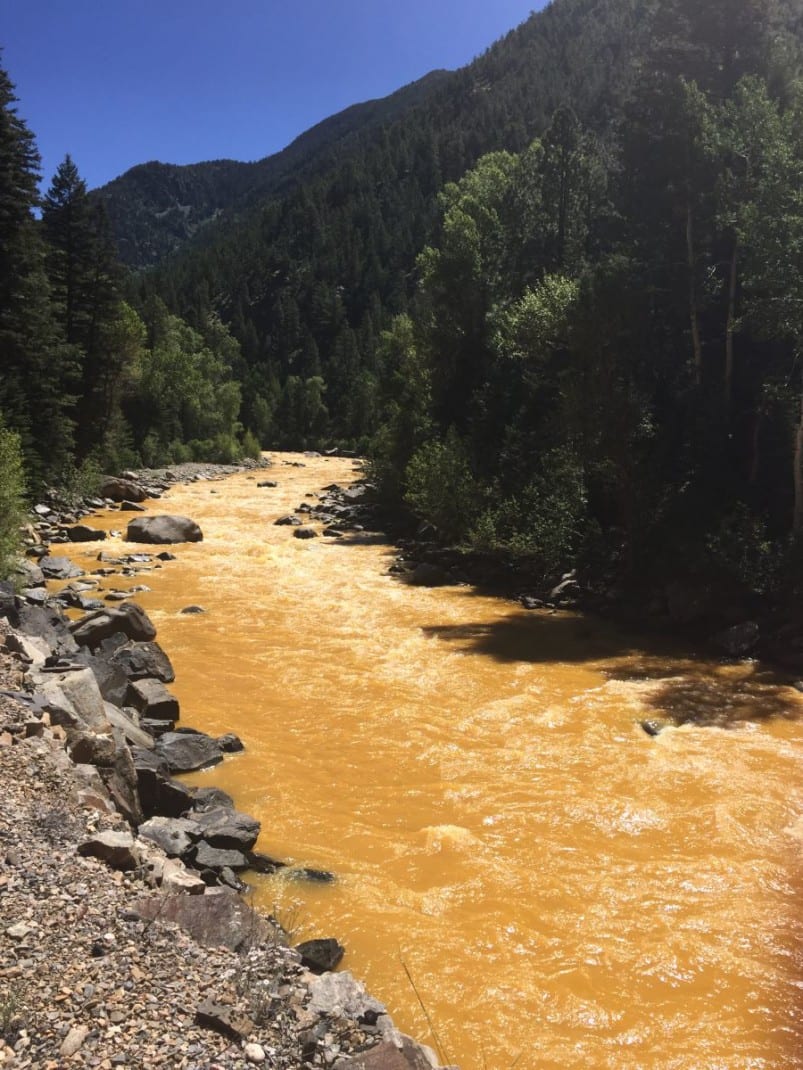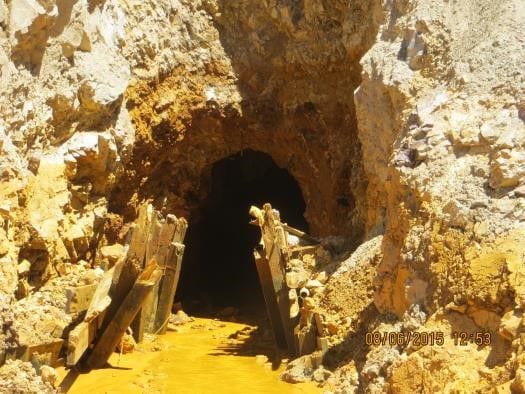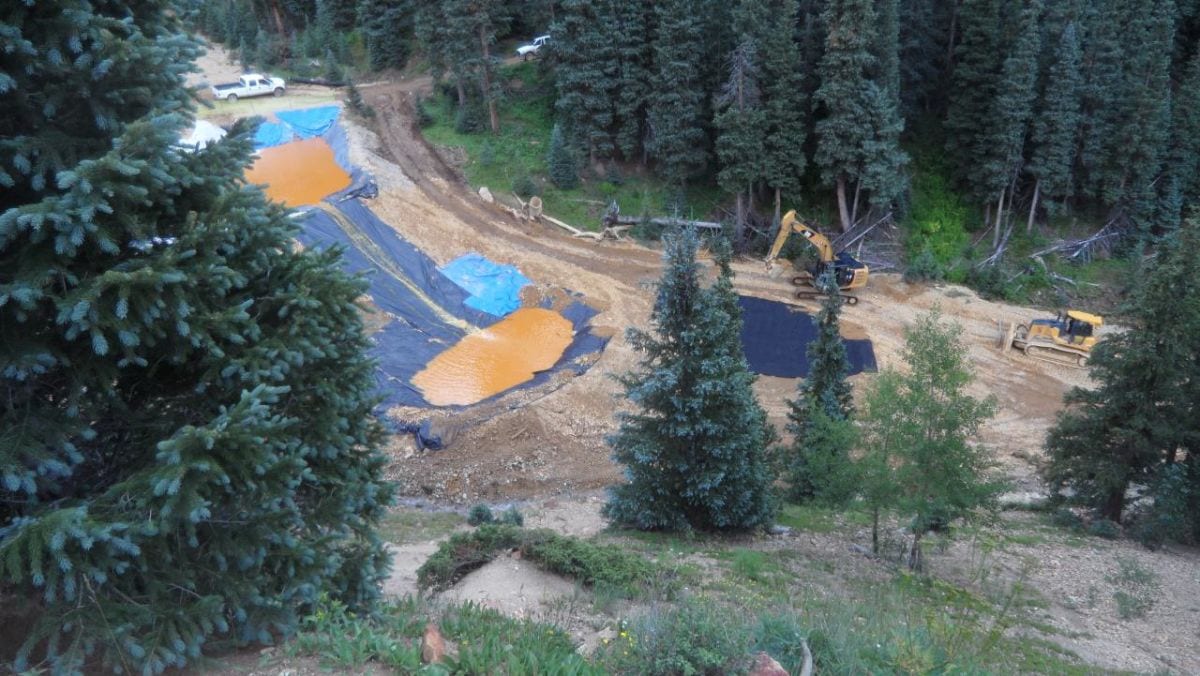
As The Independent reported on Aug. 11, roughly 3 million gallons of toxic waste from the Gold King Mine spill contaminated the Animas River in Colorado in early August. In the aftermath of the disaster, the heavy economic burdens on the region are being tallied by not only local farmers, but also fishing shops and the tourism industry that the river supports. The EPA is facing scrutiny after its contracted agents inadvertently released the waste that affected multiple Western states and Native American reservations.
According to a June article in the Durango Herald, the EPA contended that the studies conducted in the past several decades prove that the waste had been leaking—albeit at a slower rate—into the Animas River from not only the Gold King Mine but also other mines in the area for many years prior to the Gold King Mine spill. Despite this, EPA Administrator Gina McCarthy told the press that she takes full responsibility for the spill, saying that it “pains me to no end.”
The waste was leaked from one of many century-old mines, many of which are abandon—over 23,000 in Colorado. The Animas watershed alone has 5,400 historic mining sites, approximately 80 of which are actively contributing substantial levels of toxic metals into the river, depleting local fish and amphibian populations for decades. There are 500,000 such mines across the country.
 The Gold King Mine—targeted by the EPA and the source of the waste—is owned by the San Juan Corporation. Todd Hennis, the president of Boulder-based company, told CNN that he blames Kinross Gold, a Canada-based multinational mining giant for creating additional waste from the Sunnyside Mine that then allegedly leaked into the surrounding mines, including Gold King. Kinross Gold has contested Hennis’ charge, claiming that they have no connection with the San Juan Corporation or the recent spill.
The Gold King Mine—targeted by the EPA and the source of the waste—is owned by the San Juan Corporation. Todd Hennis, the president of Boulder-based company, told CNN that he blames Kinross Gold, a Canada-based multinational mining giant for creating additional waste from the Sunnyside Mine that then allegedly leaked into the surrounding mines, including Gold King. Kinross Gold has contested Hennis’ charge, claiming that they have no connection with the San Juan Corporation or the recent spill.
Current Navajo Nation President Russell Begaye told the Navajo Times that he will sue the EPA for “millions of dollars.” The Navajo Nation reservation downstream of the spill is the largest in the United States, spanning parts of Arizona, Utah and New Mexico. Within its borders are numerous national monuments, including Lake Powell, where the toxic plume is expected to settle.
“That is totally, completely unsettling,” Begaye said. “This is a huge issue. This river, the San Juan, is our lifeline, not only in a spiritual sense but also it’s an economic base that sustains the people that live along the river. You’re taking away the livelihood and maybe taking it away from them for decades…That is just, to me, a disaster of a huge proportion.”
In response to the crisis, the Navajo Nation Council—composed of representatives from various tribal communities that live along the San Juan river—called a meeting and spoke of the meaningful changes they hope to make in the coming months. The Council hopes there will come a time where water will not be taken for granted. The assembled group talked of many previous radioactive and heavy metal contaminations from mining throughout their rivers in years past. There were even some suggestions that the tribes ought to think twice about allowing large-scale corporate mining on their land.
Navajo Rancher Irving Shaggy, told NPR that he gets water for his livestock, fields, and family from the Animas.
“I’ve been growing Sudan grass for my cattle and sheep, which is our livelihood,” Shaggy said. “We sell the wool. We sell the cattle every year.”
Since the spill, Shaggy and his family have had to make a 70-mile round trip just for safe water.
“It’s going to be a long struggle, the water’s still contaminated and it’s embedded in the mud and the rocks and the tree branches along the river. These folks here are hurt,” he said. “They’re connected to the land. They’re connected to the water. We can’t be compensated for that.”
Colorado Republican Congressman Scott Tipton, whose district is next to the Animas River, also spoke out about the spill.
“If a mining operator or other private business caused the spill to occur, the EPA would be all over them,” Tipton was quoted as saying. “The EPA admits fault, and as such must be accountable and held to the same standard.”
Tipton and another Colorado Republican Congressman, Cory Gardner, have made hundreds of votes this year on both the local and national stage on various environmental policies. The two have voted dozens of times to completely defund or weaken the EPA. They have also taken a hard-line stance on alternatives to fossil fuels, as witnessed by multiple votes to deny renewable energy initiatives in Colorado.
Colorado lawmakers aren’t the only ones engaging in the dialogue about questioning the Gold King Mine spill and role of the EPA. Utah officials have also expressed skepticism about the disaster, even charging that the federal government intentionally spilled the waste out of the Gold King mine, and are now asking for Utah Attorney General Sean Reyes to launch an official investigation on the matter.
Reyes responded, saying: “We need to be compensated for the emergency response and long-term remediation. We want someone to pay and at the very least it should be EPA and other culpable entities.” Reyes’ office is also reportedly exploring a variety of potential legal avenues pursuing remittances for the damages.
In a Salt Lake Tribune article, Zach Frankel, the executive director of the Utah Rivers Council, stated, “A year ago when an oil company polluted the Green River, there were so many state interests willing to look the other way, but when EPA does it, suddenly it’s a conspiracy. If it’s an oil company, we don’t need to sample, but if it’s the EPA, you want damages.”





The EPA has been left with a huge task to deal with all the abandoned mines left by owners unable or unwilling or both to clean up what they left after making their money. Some say we are using the products they produced and so should be quiet and not condemn them. I’ll bet if people really knew the messes they were leaving they would not have been so supportive of their products, although perhaps that’s not so true. Many people in Utah still clamor for cheap energy in spite of the coal mining process leaving a mess. This is not an EPA problem. This is a regulatory problem. Mining regulations were and, in fact, still are with few teeth and little’s being done to stop that. The Republican leaders who are casting blame on the EPA should be ashamed of themselves.